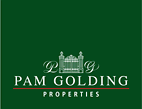Paarl Station - the good years
2008-10-30
Marguerite Lombard
DRIVING down Hartford Street into Station Street in Paarl South, it is difficult to believe that the Paarl Station area or “Ons Dorp” was once large enough to support an astonishing number of shops, general dealers, small businesses, a hotel and a number of bars. Village it was, with its own bank and post office in Concordia Street, railway police and a “lock-up”. Morris Goss is one of the area’s last shopkeepers, and remembers a time when the streets were filled with children playing, with commuters and workers crossing the bridge at the station to work at the canning factory. Paarl Station was once at a strategic junction. “One of the main routes to the interior followed Main Street from the south, down Louws Avenue into Station Street. From the Station you crossed the line into Vlei Street, and crossed the Berg River at Cecelia’s Drift. In those days there was no bridge, just a slab of cement, so if the river was in flood, you couldn’t pass through.” On weekdays and weekends the “Fransch- hoekie” - the train travelling between Fransch- hoek and Paarl - brought many more people to Paarl Station. All the “feet” through the area allowed businesses to prosper and people said then, not even the grass in front of the hotel had time to grow. Then there were at least five general dealers in Suider Paarl: on the corner of Concordia and Station Streets there was Trope and Kahanowitz, and in Station Street, Goss, Peck, Moffsen and Devine & Co (where the Labori shopping centre is today). Morris Goss’s father, Charlie, bought their shop opposite the hotel - on the corner of Station Street - in 1938 and Morris took over from his father some forty years ago. He recalls a friendly rivalry between all the shop owners, and a few unwritten “rules”. Rule number one was never to display groceries in a shop window. “It was not about the money that crossed the counter, we were a community. “Today I don’t have an assistant to help out in the shop. To think that in those years we had twelve people behind the counter: one just pumping paraffin, three of us weighing and packing, others serving customers and making deliveries. “From Monday to Friday we weighed and packed rice, sugar and flour into smaller paper bags. All week you worked for the weekend’s trade. “Everything arrived in bulk. Our sugar came from Durban direct by boat. Our flour we got from Philadelphia. When you bought candles you would buy a hundred boxes, not just a pack or two. “And when the Albanians and Rangers were due to play a rugby match at “Die Kraal” over the weekend, my father used to sell rolls and rolls of green and white, or green and yellow, ribbon depending on who the people were supporting.” Among the large general dealers, there were also the smaller shops, like Ballie Abraham’s fish and chips shop, just around the corner from Trope’s. Fresh fish would be delivered by the bakkie load, and sold to hundreds of workers returning home from their shift at the Jones canning factory. Paarl Station also had its fair share of characters, like Gawie Jonker, the shoemaker, on the corner of Hartford and Station Streets, who bought his leather from “Goss”. “Gawie used to run into our shop when- ever he needed to fix a pair of shoes, and then place the pair of shoes on a sheet of leather and measure off the amount he needed. We would then cut and weigh it.” Then there was Shedrin or “Ogies” who was one of the first people in Paarl to sell carbonated cooldrinks, and Cyril Back’s butchery, Izzy Moffsen’s shop and Robert Kaplan’s pharmacy. David Back also had an engineering works in the street, and all Paarl Station’s children bought ice-cream from Sabodka. Today there is change in the air and several of the shops are being renovated. Soon there will be little to evoke memories of Koortz and Cohen’s Blue House Bar - who will recall that Koortz was called “Oubaas Pyp” because of his habit of smoking a pipe. In no time, memories of the Corner Bar and the America Café on the corner of Main and Station Streets, or Ladoes’ take-away shop in Louws Avenue will fade. What about Chrisjan Kok and his donkey cart, or Johnny Goliath, Paarl Station’s famous singing postman? And who will recall the story about Jimmy Lee’s dream to become a Springbok cyclist? The “old timers” still talk about Jan “Slaapkop” who worked for Trope, and Hekkie Bitterhout the boxer, and Lionel Wadley who drove trucks in the War and now weighed sugar for Goss. They still joke about “Opkyk” and “Wit Piet” who celebrated their marriage at the station’s hotel, while leaving their brides waiting for them on the pavement. Paarl Station was a diverse multi-cultural mix of people, not unlike Ou Tuin in Breda Street. There were South Africans, British immigrants, Jewish refugees and Italian stone masons, all living side by side. “In those days there were enough Jews living in Klapmuts, Simondium and Paarl Station to build a synagogue. You can say I am the last of Suider Paarl’s Jews,” says Morris Goss. “Paarl Station area was never White. We had lots of Coloured neighbours. “There were those living “agter die lyn” where Jones & Co was, and in the area between South Street (known as “Soutstraat”) and Louwslaan, as well as Donkerbosdorp (south of the canning factory), Die Eiland (De Soete Inval) and The Gate (the level crossing on the railway line on the way to Simondium). “Don’t forget we also had two Coloured schools - Zion in Hartford Street and Bethesda “agter die lyn”. “We were all just ordinary, hardworking and respectable people. Many of our clients worked at Jones and when the season ended, they worked at the tobacco company where they dried tobacco leaves for Rembrandt.” Over the years Paarl Station lost its economic base. The factories closed, forced removals emptied the streets, the schools were shut and without feet passing through their shops, the shopkeepers boarded up their windows or sold up and moved on. From time to time people still drop in at Morris Goss’s shop to chat about the old days, but for the most part business is quiet, and property owners dream of a time when people will return to Paarl Station.
More
News
|


